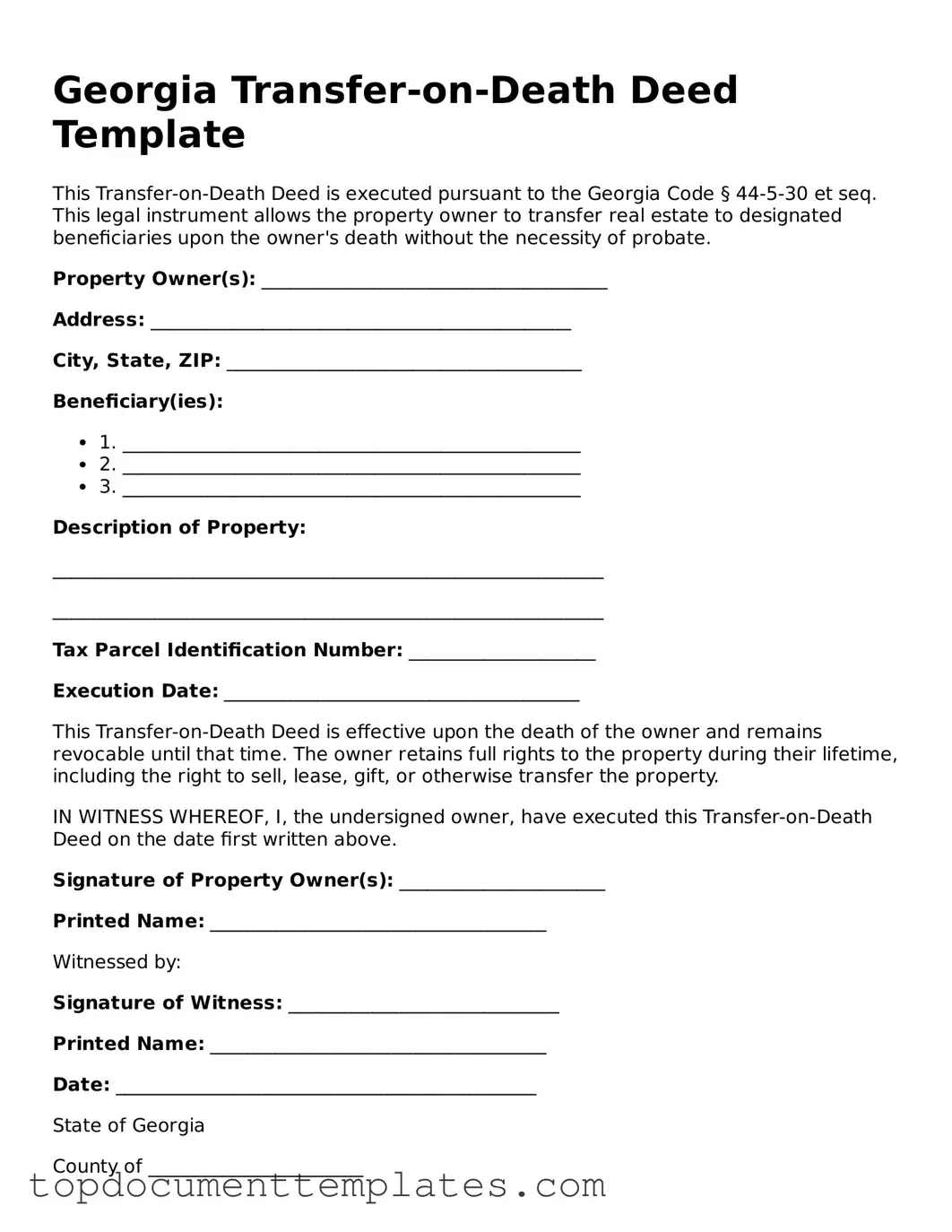Valid Transfer-on-Death Deed Form for Georgia State
The Georgia Transfer-on-Death Deed form is a legal document that allows property owners to designate a beneficiary who will receive their real estate upon the owner's death, bypassing the probate process. This form provides a straightforward way to transfer property, ensuring that loved ones can inherit without unnecessary delays or complications. To simplify the process of transferring your property, consider filling out the form by clicking the button below.
Open This Form
